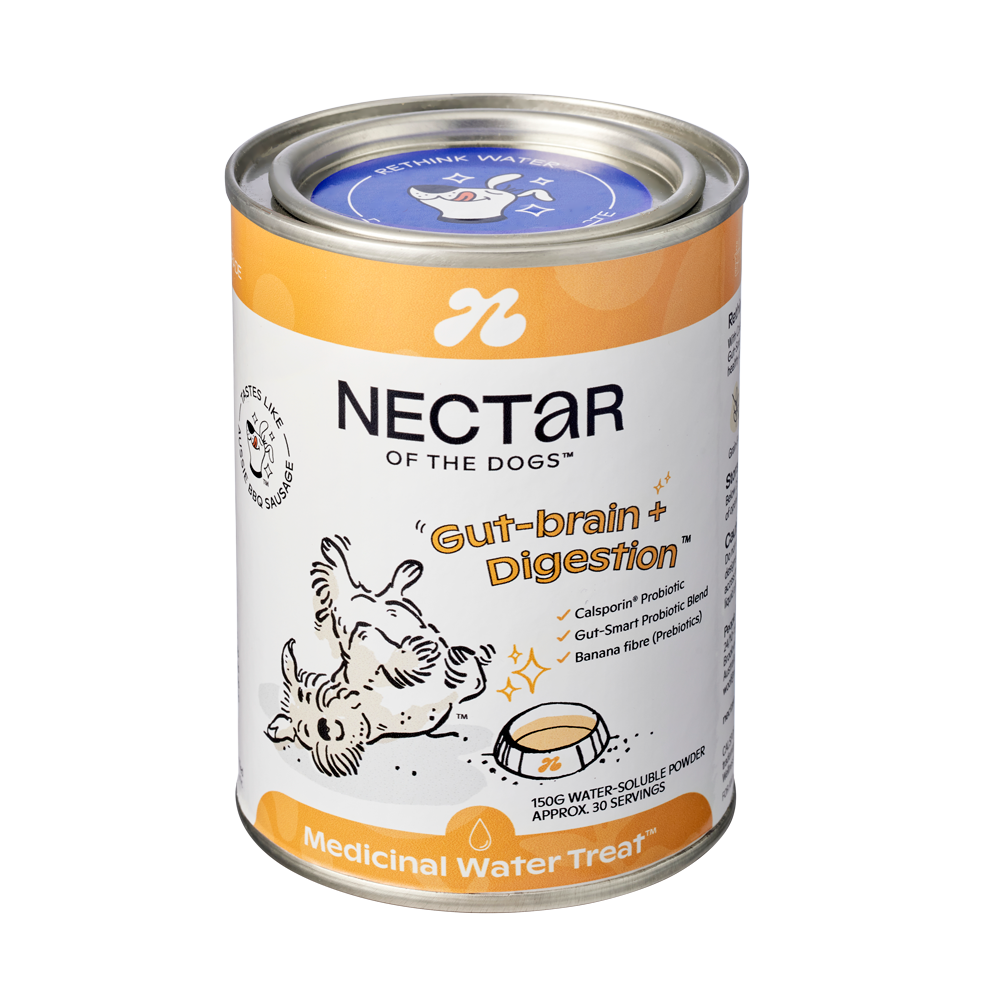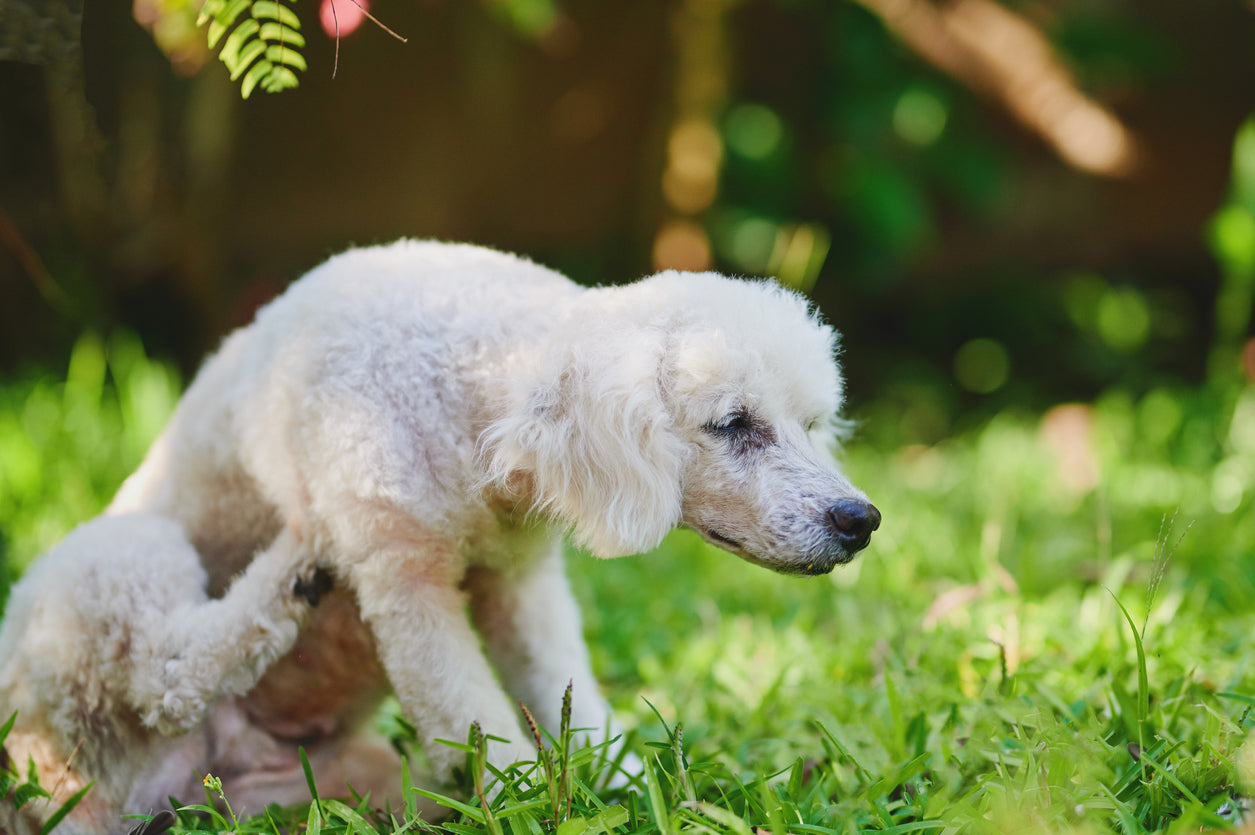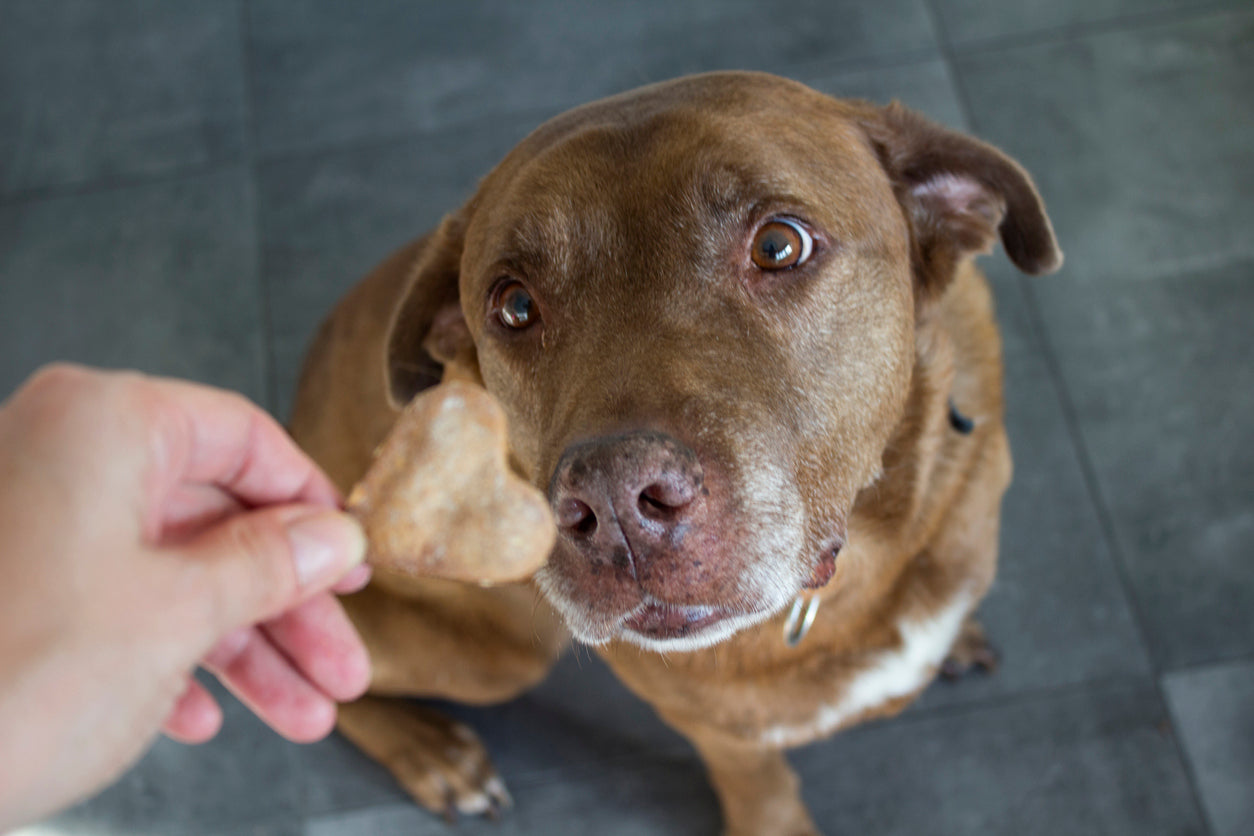5 signs your dog may be stressed
We all want our dogs to be happy at all times, and to help with this, we must learn how to identify when they’re feeling unsettled.
Although the signs of stress and anxiety in dogs are often subtle, by paying close attention to their behaviour you will be able to detect when your pup is getting stressed or overwhelmed. . Dogs primarily communicate through their body language, so if you notice different or unusual behaviour, it’s likely that your dog may need a bit of soothing.
Identifying stress in your pup is also important as it can often be reduced or eliminated by implementing a few strategies, whether it is some controlled exercise, behaviour modification, the introduction of functional ingredients and supplements in their diet or with the help of a veterinarian or behaviourist.
So, we’re going to highlight 5 signs that may indicate that your pup needs to be soothed.

Excessive barking or whining
Whilst barking is normal for dogs, excessive barking or whining may indicate that something is stressing out your furry friend.
Dogs bark when they’re stressed for a number of reasons. They may be trying to:
- Capture the attention of their owner
- Express fear (excessive barking accompanied by whining is doglish for “I’m scared!)
- Scare away a fearful object, whether this be an animal, a person or a creepy looking doll
- Self sooth
What to do:
If your dog is barking out of fear, it’s important to determine the trigger. Once you’ve figured it out, sooth your pup and show them they have nothing to worry about.
If stress induced barking becomes an ongoing issue, you may need to enlist the help of a professional dog behaviourist to equip your dog with proper coping mechanisms.
 Whale eye
Whale eye
Sometimes, when dogs are stressed, you’ll be able to see the white parts of their eyes. This wide-eyed stare is known as ‘whale eye’ and it's a common indicator of fear. Your pup’s eyes will become enlarged and they may have dilated pupils - this is referred to as a hypervigilant state.
Usually, whale eye is accompanied by a tilted head and a fixed gaze. If you notice your dog exhibiting these behaviours, it’s highly likely that they’re feeling threatened.
It’s important to pay close attention to whale eye, as it could come before aggressive behaviour.
What to do:
Whale eye is a sign that your pup needs help. Try to figure out your dog’s triggers, and if possible, remove your pup from the situation it’s in. Here, it’s important to stay calm and gently lead your dog away from whatever it is that’s scaring them.
Pacing and panting
Like humans, dogs pace when they’re feeling unsettled.
Dogs may pace back and forth during a thunderstorm, at the vet, or in any situation where they’re feeling uncomfortable. They cannot settle down or stay still.
Dogs have sympathetic nervous systems which means that as they get nervous, their heart rate and respiratory rate will increase which will often display as panting.
Usually, stress related pacing is accompanied by panting and vocalisations, so if you observe your dog engaging in these three behaviours, it’s highly likely that they’re feeling nervous.
What to do:
When your pup is pacing, remove any obstacles that could cause them harm. If they trip over a foreign object, this will elevate their stress, so make sure they’re pacing in a safe space.
If you discover that they’re being threatened by a certain sound or object, try your best to remove these triggers. And if it’s something out of your control, try soothing them with your voice.
Avoidant behaviours
Avoidant behaviours are another sign of stress, and often, they are easy to spot. Some common avoidant behaviours in dogs include:
- Hiding behind you or under furniture
- Backing away from situations
- Looking at the ground
- Licking themselves in social situations
Whilst dogs exhibiting these behaviours are less likely to be aggressive, it’s still important to sooth your pup when they’re detaching themselves from a situation.
What to do:
If your dog is being avoidant because they’re in an unfamiliar situation (e.g., you invited a new friend into your house), don’t force an interaction. Let your dog open up in their own time and show them there’s nothing to be worried about.
However, if they’re playing hide and seek at the vet's office, you may need to gently encourage them to come out of hiding, or give them a treat as an incentive.
Pinned-back ears
Pinned-back ears against the body are another common sign of stress.
Often, this indicates that your dog is feeling threatened.
What to do:
If your dog is pinning their ears back, it’s important to survey your surroundings to determine your pup’s triggers. Pinned-back ears are an indication that your dog is feeling highly defensive, so if you fail to soothe your pup, they may embark in aggressive behaviours.
If you can, it’s often best to remove your dog from the situation they’re in, as this will make your pup feel safe. Otherwise try soothing your dog with your voice, showing them that there is nothing to fear.
 Keep your pup calm
Keep your pup calm
As humans, we know how horrible it feels to be stressed. As much as we wish it were impossible for our fur babies to feel anxious, there’ll unfortunately be times where their stress is out of our control.
Luckily, there are a few ways to help our dogs manage their stress.
Nectar’s Calm + Relax is enriched with healthy ingredients to reduce stress and promote calmness. Just add one scoop to your dog’s water bowl, and your pup will be zen in no time.
Help your pup cope with the stressors of everyday life. Try Calm + Relax today.














